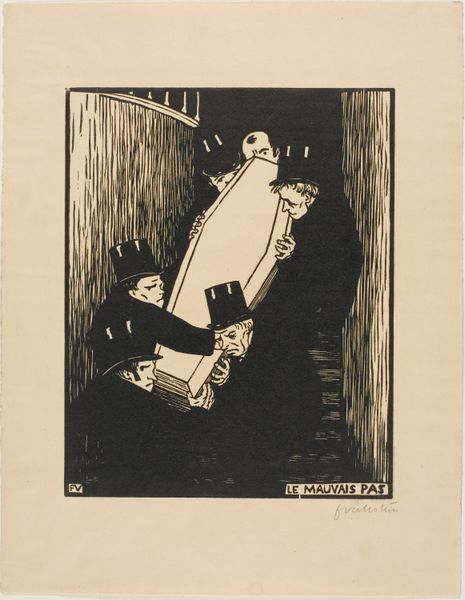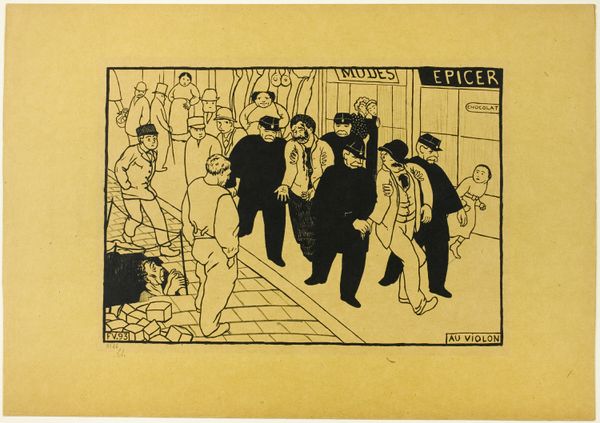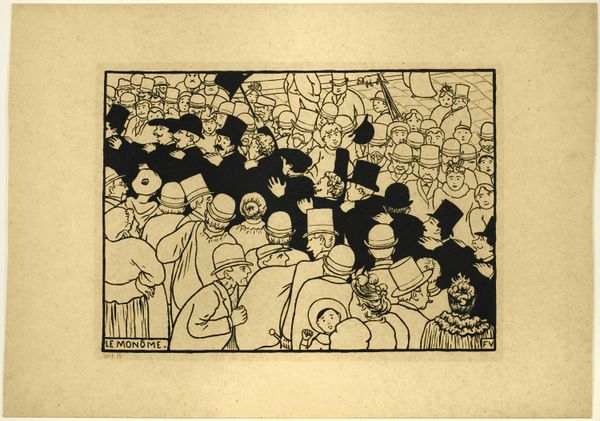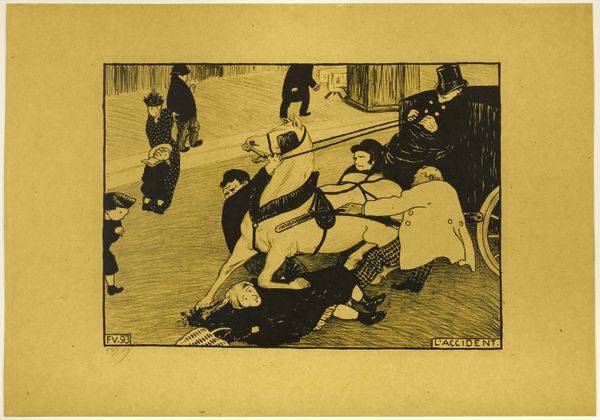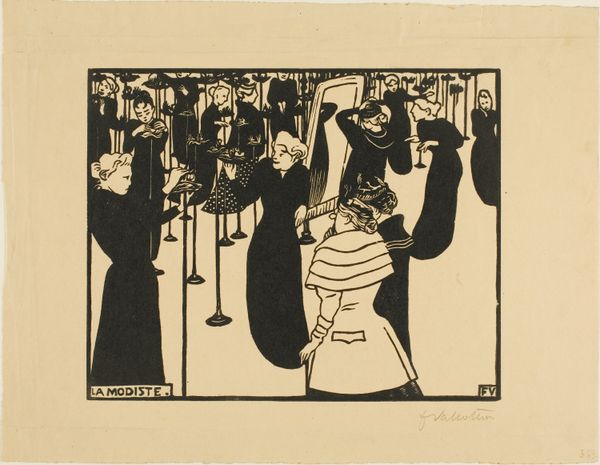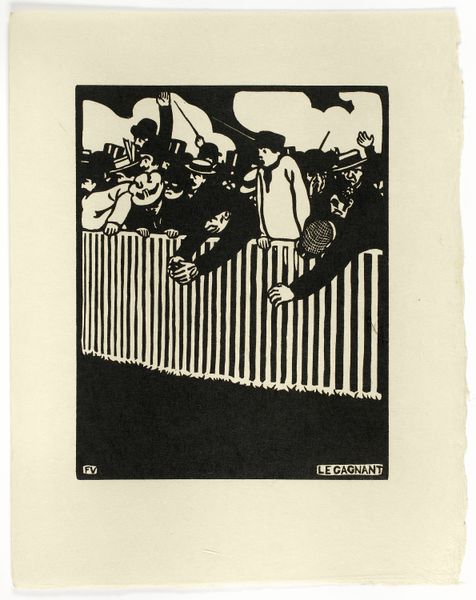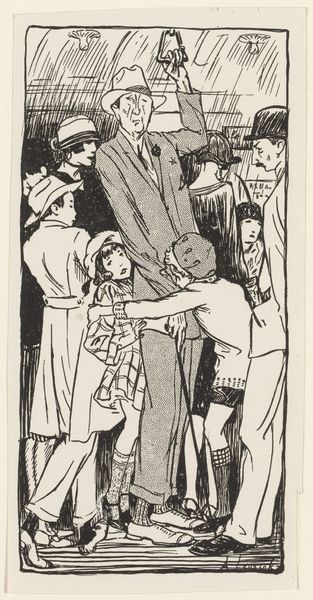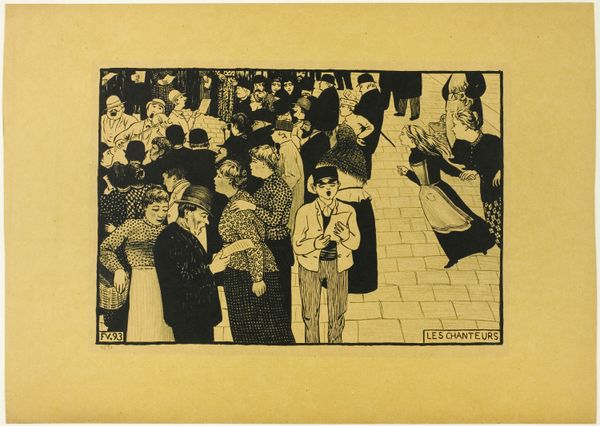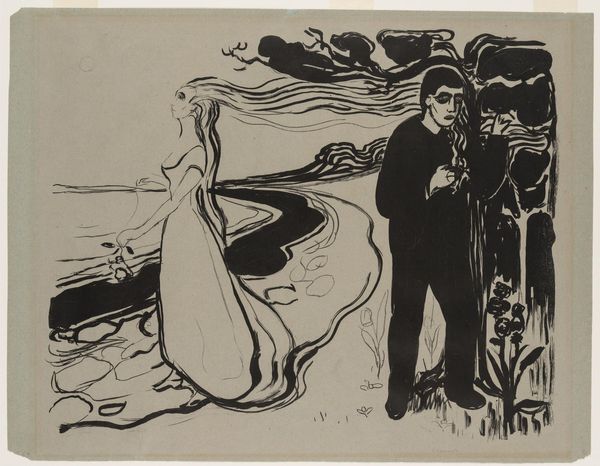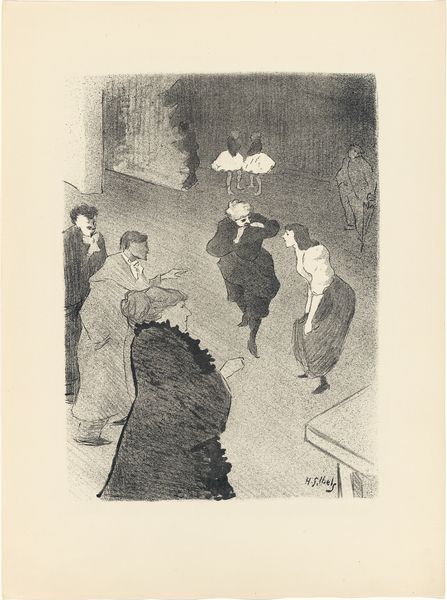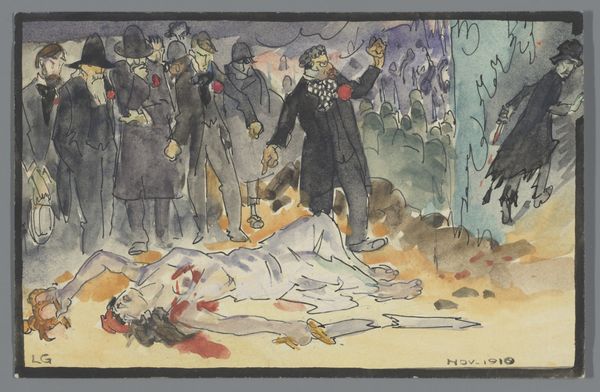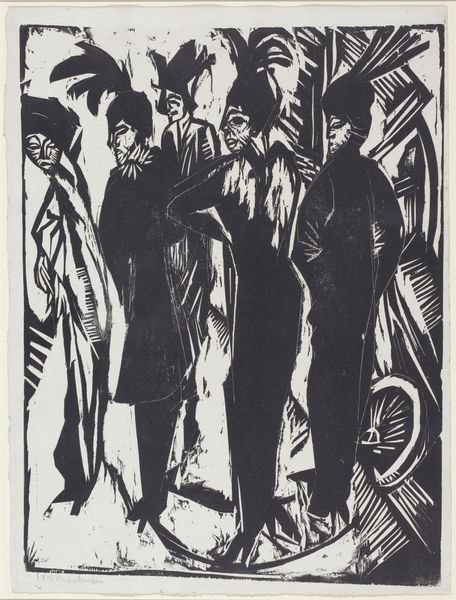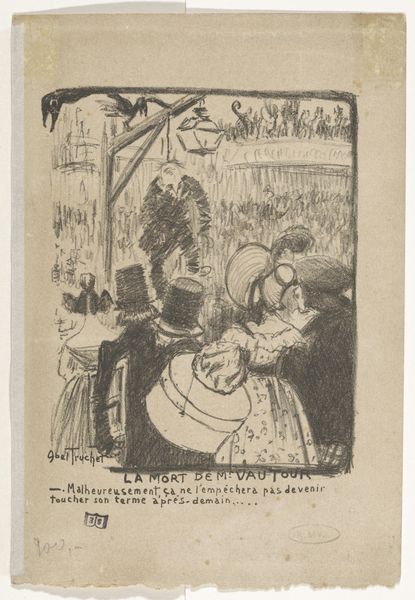
drawing, graphic-art, print, paper, woodcut
#
drawing
#
graphic-art
# print
#
figuration
#
paper
#
linocut print
#
woodcut
#
france
#
symbolism
#
genre-painting
#
monochrome
Dimensions: 260 × 352 mm (image); 324 × 422 mm (sheet)
Copyright: Public Domain
Curator: Félix Vallotton's striking woodcut, "The Funeral," created in 1891, offers a glimpse into fin-de-siècle French society. Editor: It’s a stark image, isn't it? The high contrast between the black figures and the pale ground lends it a somber, almost unsettling mood. Look at how the black ink seems to weigh down the entire scene. Curator: The sharp contrast was indeed a conscious choice. Vallotton was actively engaged in printmaking and deeply involved in avant-garde artistic circles that embraced these bold, graphic techniques. This wasn't just about portraying a funeral, but also about making a statement against the aesthetic norms of the time. Editor: You can almost feel the weight of the wood he carved, right? The starkness speaks to the manual labor involved; there’s a palpable connection to the physical process. It seems worlds away from a smoothly rendered painting. And notice how figures are reduced to these dark, blocky shapes – it's almost like the artist is flattening the social hierarchy in this moment of grief. Curator: Indeed. Remember, late 19th-century France was a hotbed of social and political change, grappling with class tensions and evolving concepts of modernity. Vallotton used his art to dissect and comment on this rapidly changing society, often targeting bourgeois values. This funeral scene can be read as a critical commentary on the rituals of the middle class in mourning. Editor: There's a certain irony at play, isn't there? Here we have an image rendered using decidedly un-bourgeois methods—woodcut, mass-producible prints—to depict a quintessentially bourgeois ceremony. He's employing the tools of craft to question their customs, which highlights art's potential for dissent, especially when it steps outside traditional 'fine art' circles. Curator: Exactly. By choosing printmaking, a more accessible medium than painting, Vallotton engaged with a broader audience and circulated his social critiques more widely. Editor: Looking at the stark materiality here helps uncover hidden meanings, and remember, nothing about how a piece of art is made is ever accidental, even today. Curator: Absolutely. Examining "The Funeral" provides valuable insight into the intersection of art, society, and politics in 19th-century France. Editor: It’s a good reminder that sometimes, the medium is just as important as the message.
Comments
No comments
Be the first to comment and join the conversation on the ultimate creative platform.
